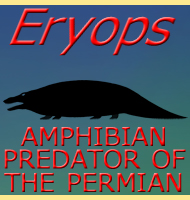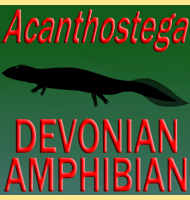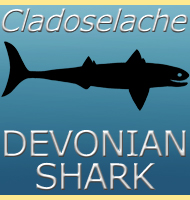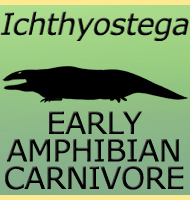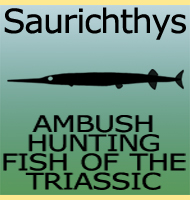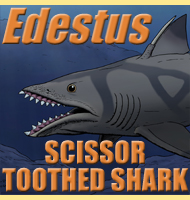


Tiktaalik

Name: Tiktaalik
(Burbot).
Phonetic: Tik-taa-lik.
Named By: Ted Daeschler, Neil Shubin &
Farish Jenkins - 2006.
Classification: Chordata, Sarcopterygii,
Tetrapodomorpha.
Species: T. rosea (type).
Diet: Carnivore.
Size: Certainly over 1 meter long. Some
isolated remains suggest a size of up to 2 meters long.
Known locations: Canada, Nunavut, Ellesmere
island.
Time period: Frasnian of the Devonian.
Fossil representation: Several specimens.
In
2004
the discovery of three fossils would help bridge one of the most
important evolutionary gaps in the fossil record. These fossils were
the first known representations of Tiktaalik, a
creature that was not
only a fish but also possessed the rudimentary features of the later
tetrapods. Unlike other creatures which are usually named using
ancient Greek, Tiktaalik has been named using the
Inuktitut word for
Burbot.
As
a transitional form, one
of the key features of Tiktaalik is the
construction of the front
fins. Instead of simple rays of bone as seen in most other fish,
these have a bone structure that forms a very basic arm structure that
includes a wrist and fingers. While these limbs where not suitable
for walking in the classical sense as animals do today, they would
have allowed Tiktaalik to lift its body up off the
ground. They may
also
have been used to push its way through the shallows where the water was
not deep enough to support its body. This would have enabled Tiktaalik
to
reach other areas of water that would not have been accessible to other
species enabling it to hunt in areas of low competition, save for
others of the same ability.
Another
important feature of
Tiktaalik is the neck in that it actually had one.
Earlier fish had
their gills reinforced by bones, which means that they could not
turn their heads independently from their bodies. Tiktaalik
however,
while still retaining gills, had no bone structure supporting them,
meaning its head had a non-rigid attachment to its body. This
enabled Tiktaalik to move its head, without
having to move its body
as well, a very important function for a predator of the shallows
where body movement would have been restricted.
The
rib cage is quite sturdy
especially when compared to other fish, with the individual ribs
slightly overlapping one another. This is important as without the
buoyancy of water to support its mass, Tiktaalik
would need extra
support from its skeleton to protect its internal organs from its own
body weight.
On
top of the head of
Tiktaalik are holes which suggest the presence of
spiracles, air
passages that would have connected to what may have been lungs. This
is another key evolutionary step that would have allowed Tiktaalik
to
exploit the oxygen content of the air, allowing it live for longer
periods out of the water, as well as providing a boost for it to live
in waters with poor oxygen content.
What
can be said about the
lifestyle of Tiktaalik is that it was a predator
that may have lain in
ambush for its prey. The eyes are situated on top of its skull
meaning that it could either approach its prey from below in the
water, or like a crocodile, lain near the surface with just its
eyes above the water. When its prey approached close enough it could
then have raised itself up for extra reach and turned its head for prey
capture. The teeth inside the jaw are small and many, adaptations
that would have been better suited to capturing small and nimble prey
like insects and fish.
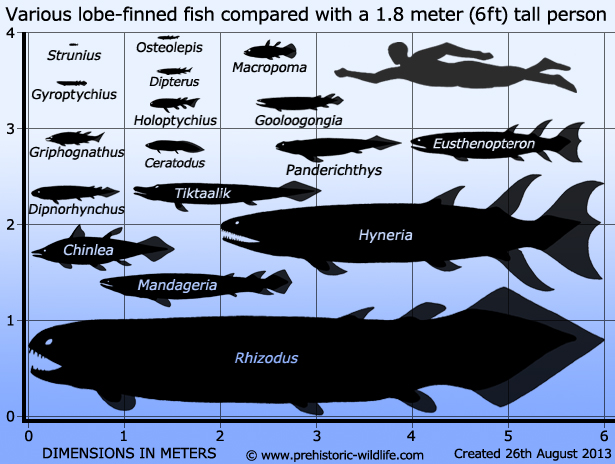
More information on the above fish can be found on their corresponding pages; Ceratodus, Chinlea, Dipnorhynchus, Dipterus, Eusthenopteron, Gooloogongia, Griphognathus, Gyroptychius, Holoptychius, Hyneria, Macropoma, Mandageria, Osteolepis, Panderichthys, Rhizodus, Strunius, Tiktaalik (upper estimate).
Further reading
- A Devonian tetrapod-like fish and the evolution of the tetrapod body
plan - Edward B. Daeschler, Neil H. Shubin & Farish A. Jenkins
Jr - 2006.
- The pectoral fin of Tiktaalik roseae and the
origin of the tetrapod
limb - Neil H. Shubin, Edward B. Daeschler and Farish A. Jenkins Jr -
2006.
- Behavioral evidence for the evolution of walking and bounding before
terrestriality in sarcopterygian fishes - Heather M. King, Neil H.
Shubin, Michael I. Coates & Melina E. Hale - 2011.
- Pelvic girdle and fin of Tiktaalik roseae. -
Proceedings of the
National Academy of Sciences. 111 (3): 893–899. - N. H. Shubin
& E. B. Daeschler & F. A. Jenkins - 2014.
----------------------------------------------------------------------------
Random favourites
 |
 |
 |
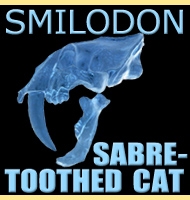 |
